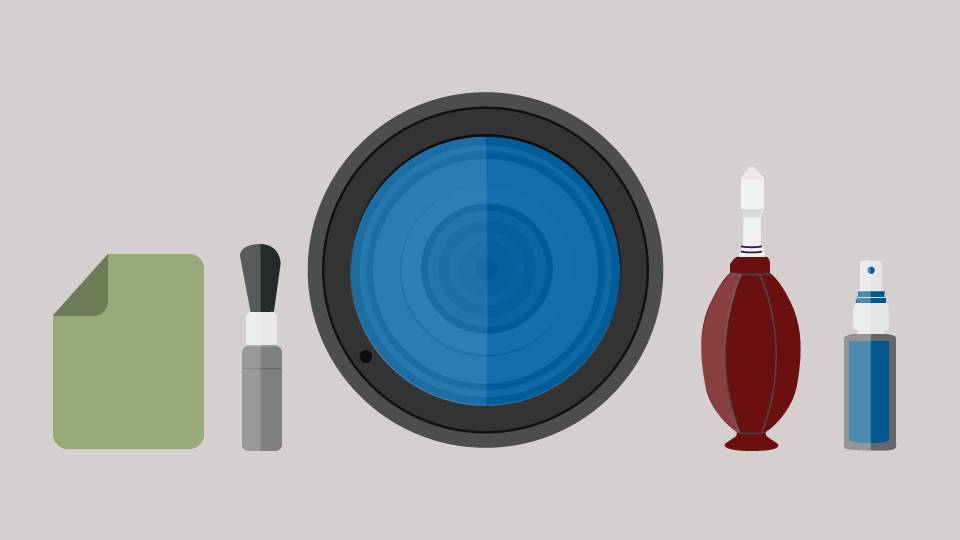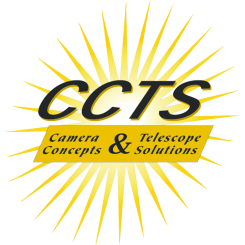Cleaning Telescope Optics
- Posted on
- By Alan Witzgall

Learn the safe and proper way to keep all your optics crystal clear and performing at their optimum level
CLEANING TELESCOPE OPTICS
(Credit to Alan P Witzgall)
The question is often asked of us:
How do you clean the various optical surfaces of the telescope?
Answer:
You do it with extreme caution and as little as possible!
The very real possibility exists that you will scratch either the coating or the optical surface itself if you are not careful. The best thing to do is to not let your optics become dirty in the first place. Keep your optics covered whenever you are not using them. That includes the finder scope, the eyepiece, the main objective lens of your refractor, all your accessories, and the corrector lens of your Schmidt-Cassegrain or Maksutov telescope. Be sure to keep and use all the caps and covers that originally came with your telescope. When you lose them at some point or another, you can always get replacements from us!
The First Battle: DUST
If you are careful with your optics, then the only amount of cleaning that will be necessary will be to eliminate any dust particles that will settle on the lens elements. In order to remove dust, do not touch the optical surface with anything except commercially available canned air.
A good sized can is available from us for $9.99. Hold the can vertical when you blow away the dust, or the propellant could end up staining the lens. NOTE: Do not use the air from a commercial compressor. Oil and water will be present, and can produce disastrous results.
During the course of a night’s viewing, dew that forms on the outside optical elements will act as a magnet for any dirt or debris that might collect. A flexible dew shield will help keep dirt and moisture to a minimum. When in the field, keep your dew shield on at all times. An even better method is to own a heated dew shield or use a strap-on heater such as the Kendrick Dew Remover System. Turn it on at the very beginning of your night’s viewing and keep it on until shutdown. This will keep what fine dust is there from streaking and causing a mess.
For Newtonian users, make an extension tube to keep dust and dew from forming on the surface of your diagonal mirror. This extension will also give you more contrast in a light polluted area.
CLEANING YOUR EYEPIECES
One of the best tools to use in cleaning your eyepieces is a product called the Lens Pen. This cleaning tool will restore your eyepiece to proper condition.
CLEANING CORRECTOR PLATES
With corrector plates, first dust off the plate with the canned air. If the plate has streaks from dewing, use Kleenex (be sure it is not treated with any moisturizer such as aloe) and a bottle of quality lens cleaner . Fold the tissue into a rectangle approximately 2 inches wide.
Moisten the Kleenex with the liquid- do not pour liquid directly onto any glass surface. Wipe from the secondary holder rapidly to the edge, changing tissues with every wipe. Overlap each wipe by ½ inch. This will usually clear off any dirt. If the dirt is seen on the inside of the corrector plate, bring it to our technicians at Camera Concepts. We are equipped to properly disassemble, clean, and reset such instruments.
CLEANING PRIMARY MIRRORS
Newtonian telescope mirrors should be cleaned no more than once a year, and, if possible, not at all. The problem is that these are first surface mirrors, and despite the over coating of Silicon Monoxide, improper cleaning can and will scratch the delicate reflective surface of your mirror.
Take the mirror out of its cell, being careful NOT to touch the front surface. Dust off the mirror with the canned air. Then, find a sink large enough to hold the mirror. Place a clean, well rinsed cotton bath towel ( one that has not been subject to fabric softeners). Fold the towel into three layers and place it in the bottom of the sink. Start a gentle flow of warm water (about 80 degrees F), and then place the mirror face up under the flow of water. Allow the water pressure to lift off as much of the dirt as possible. Then let the mirror soak under an inch or more of water for a half hour.
As far as a cleaning fluid, we recommend Kodak’s liquid lens cleaner which is available commercially through our stores or you can make your own solution using the following recipe:
1 gallon of distilled water
3 drops of Palmolive dish washing liquid
2 ounces of denatured alcohol
Drain the sink, and rinse the mirror by standing it upright in the sink, and spray clean water over the entire surface for at least a minute. Lay it face up again, and pour the cleaning fluid into the mirror, covering it completely. Using medical grade cotton, wipe the optic once starting on one edge, across the surface of the optic. IMPORTANT NOTE: When wiping, do not apply any pressure to the cotton. Only use the weight of the cotton itself to lay on the surface of the mirror. After the initial wipe, get a new piece of cotton and repeat the action—one stroke, just the weight of the cotton, overlapping the previous pass, and so on until you reach the opposite edge. Then turn the mirror 90 degrees, and repeat the whole procedure. This should be sufficient to clean all but the most stubborn debris.
Finally, drain the sink and rest the mirror upright. Rinse off the cleaning fluid with a steady stream of clean water from the sprayer. Be sure to hit all areas of the mirror. Take the mirror to a table away from any household traffic. Prop it on edge securely with whatever is handy, with several layers of paper toweling under the lip of the optic. Chances are that the water will drain rapidly, leaving only a few droplets on the mirror. Use the corner of the paper towel to remove them. Just touch the toweling to the drop—capillary action does the rest. Then reinstall the mirror in its cell, and recollimate if needed.
CLEANING REFRACTOR LENSES
Refractor objectives are extremely difficult to deal with. I do NOT recommend disassembly of any objective lens. At the time of manufacture, the lenses are oriented by rotating one element against the other to optimize color correction and minimize prismatic error. You do not know if the lens was marked by the manufacturer for proper assembly outside of the shop. Just as important, modern refractor designers are lately using rather exotic glass and even crystalline materials (fluorite) in their objective lenses. You do not want to wash fluorite in soapy or any other kind of water, nor even wipe it at all! The glass is thermally sensitive, stains and even breaks easily! Your best bet is using canned air followed by the wiping procedure for corrector plates. Fold the pad into a rectangle of ½ inch width, and start at the top of the lens, overlapping each stroke, then turn your lens 90 degrees, and repeat. Again, if the dust is inside the optical tube, or worse, is between the lens elements, bring it to us.
As a final note: Cleaning optics should be done only when absolutely necessary and with great reserve and caution. We give you the above guidelines to help you if you choose to clean your optics yourself. Just be aware that you do so at your own risk and we cannot be held liable for any mistake you may make in this process.
